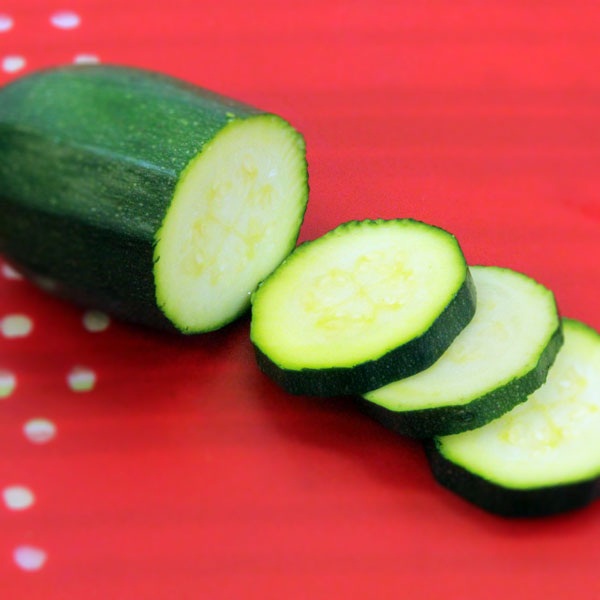Stage

The ABCs Of Vitamin C
Vitamin C is critical for health and growth in infancy. This essential vitamin promotes a strong immune system, the growth and maintenance of healthy skin and red blood cells, plus is necessary to build collagen, which helps to form connective tissue that binds muscles, bones, and tissue together. Vitamin C is also known to increase wound healing, while preventing infections and, as an antioxidant, helps protect against diseases such as cancer, heart disease, and arthritis in the future.
While you may have heard these important vitamin C facts from your pediatrician, it may come as a surprise to learn of the many unexpected ways to ensure your little one is getting adequate amounts of vitamins. When baby starts using solid foods as their primary source of nutrition, they should consume foods high in vitamin C daily. Note that most pediatricians suggest infants 7 to 12 months should consume 50 mg. of vitamin C a day, while children 1 to 3 years should have at least 15 mg. a day. To ensure your baby is getting enough vitamin C, try some common (oranges) and uncommon (zucchini) with them. Let’s take a look at some of the common and uncommon sources of vitamin C.
Citrus fruits.
You probably already know about this vitamin C option. Oranges, lemons, grapefruits, and tangerines are just a few of the many types of citrus fruits. They’re well-known for their high vitamin C content. Diluting the juice in water, pureeing, or simply eating the fruit as is-are all excellent ways to introduce your child to these sweet, colorful, and vitamin C-rich foods.
Tomatoes.
Foods like pizza, spaghetti, tomato soup and even ketchup are known to be loved by most little ones. Believe it or not these tomato-based foods are all sure-fire ways to get your little one to sneak in some extra vitamins, including vitamin C! For instance, a 10-ounce serving of tomato soup offers 6.4 mg. of vitamin C. Tomatoes are versatile, try a couple of varieties with your little one to find which they like best.
Sweet potatoes.
This bright and sweet vegetable is ideal for when your baby first begins to eat solids. They contain a wide range of nutrients and can be prepared in a variety of ways. A common way for parents to introduce sweet potatoes is during baby-led weaning, by cooking and mashing them to an appropriate consistency. As your little one progresses in their solid food journey, experiment with different preparations, such as sweet potato French fries.
Cantaloupe.
This child-popular melon is also a great source of vitamin C. A sweet fruit option that can be introduced to baby as soon as they begin eating foods like purees. It’s rich in vitamin C and other essential vitamins. Just one-quarter of a medium cantaloupe features an eye-opening 47 mg. of vitamin C This fruit’s preparation is critical because it can pose a choking hazard if not done correctly.
Watermelon.
Watermelon is a nutritious treat for your little one that is sweet, juicy, and contains approximately 92%1 water. It’s rich in antioxidants, including vitamin C, which can help strengthen baby’s immune system. Like many of the other fruits listed, there is a variety of ways to introduce your little one to this delicious fruit.
Zucchini.
Just one cup on zucchini contains 11 mg. of vitamin C and helps add even more healthy variety to your child’s daily diet. Zucchini can be roasted, steamed, sautéed, or pureed. Pureeing it and making it a sauce with pasta is a sneaky way to sneak this vegetable into your child’s diet (especially if they’re picky).
While offering your toddler a piece of fruit with each meal is a good idea, try introducing other lesser-known sources of vitamin C, such as those listed above, to help provide your toddler with a well-balanced diet that provides multi-vitamin and nutritional benefits.
Stage 5

- 1 whole wheat sandwich round or pita
- 1/4 cup Pizza sauce
- 1/4 cup Mozzarella cheese, grated
- 1/4 cup Mushrooms, sliced, cooked and cooled
- 1/4 cup Zucchini, sliced, cooked and cooled
- 1/4 cup Sweet red pepper, sliced, cooked and cooled
- 1/4 cup Spinach, cooked and cooled
Open up sandwich round or pita and spread pizza sauce onto both halves.
Put each of the cooked vegetables into small bowls. Have your child choose toppings from the bowls to build their favorite pizza.
Top each pizza with grated cheese.
Bake both pizzas on a cookie sheet at 400 degrees Fahrenheit for 5-7 minutes, or until cheese is melted. Let cool and serve.
Recipe Yields: 2 Servings
Stage 5
1 cup water
1 parsnip sliced 1/8 in thick
1 Zucchini sliced
2 cups Cauliflower
2 Bay leaves
1 cup Organic vegetable juice
Wash and cut Parsnip, Zucchini and Cauliflower. In a medium saucepan, bring to boil water, parsnip, zucchini, and bay leaves. Cover and simmer 10 minutes. Add cauliflower and simmer an additional 5 minutes. Remove bay leaves. Add vegetable juice and blend with the immersion blender until smooth.
Stage 1 + 2

A yummy source of potassium and magnesium, zucchini is easy to prepare and keeps well.
The ratio of raw to steamed vegetables is 1:1. One cup of raw veggies will make approximately one cup of puree.
Thoroughly wash the zucchini and cut it into slices or chunks. Boil or steam until soft. Cool slightly and then using your immersion blender, blend to puree, adding breast milk or water to thin to the desired consistency.
For Stages 3 and 4, cut the raw zucchini into pieces sized for little fingers to pick up easily before steaming. Steam just until tender, and then cool slightly before serving.
After introducing zucchini, try summer squash. It can be prepared and served the same way.










